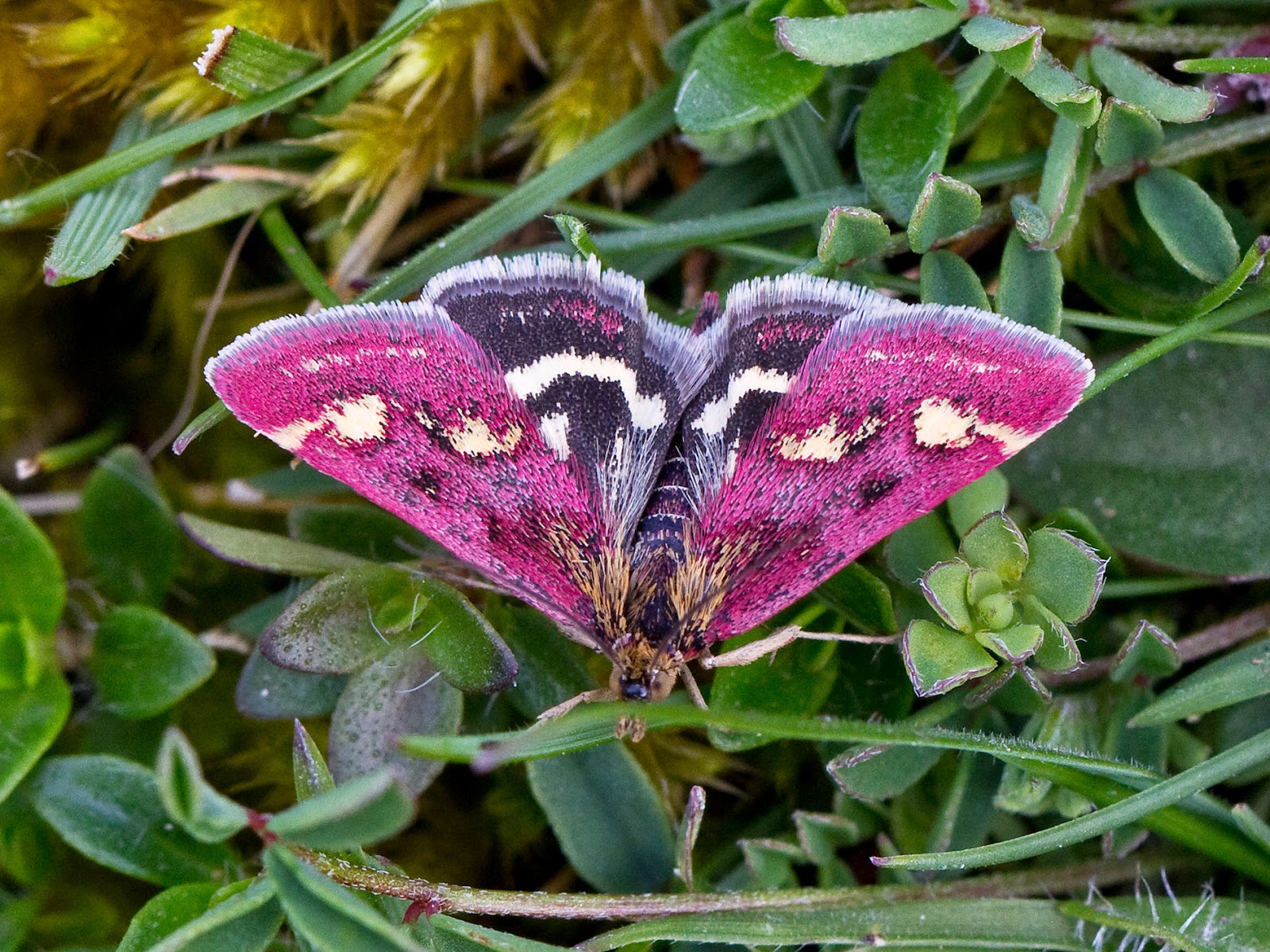Ring Ouzels were the target of the day. We usually see them in the autumn on their way south, but one had been reported in a paddock field in Warners Lane Selsey and it had been there for eight days. Of course when we got there on the ninth day it had moved on but the field was still interesting with half a dozen Wheatears, two female and one male Redstarts, and assorted other small birds. The male Redstart looked really smart but he would not come close enough for a photograph. Fortunately one of the females was more obliging.
 |
| Female Redstart |
There must have been a big fall of Wheatears overnight as we found them wherever we went on the peninsular including the unusual sight of eight sitting in a tree in Rectory Lane.
 |
| Wheatear |
A walk up the west side of Pagham Harbour from Church Norton towards the Visitors Centre gave us plenty of views of Linnets, Whitethroats, and probably a Lesser Whitethroat, although we could not really get a satisfactory view of the latter.
 |
| Linnet |
Then we managed to get onto another Ring Ouzel, this one a male with a bright white breast band. We watched it for a while but found it difficult to get a decent picture.
 |
| Ring Ouzel |
We were then joined by Dave Smith, Bernie Ford, and Dorian Mason, and they spotted a second Ring Ouzel close by. We ended up with two in the same tree, but I was a bit slow and missed that picture. When we were left on our own we decided to stake out its favourite perch and wait for a better picture opportunity. All looked good, it was gradually coming closer......
.......and then a Magpie took exception to its presence and chased it off. Perhaps the similar black and white colouration led the Magpie to see it as a threat.
 |
| There goes my picture opportunity |
Magpies have never been my favourite bird. They have now becoming public enemy number one.
We were also fortunate enough to get a flyby from a Cuckoo that we had been hearing in the distance for about an hour. I did manage to get a record shot but you would have to be a good birder to recognise it as a Cuckoo from the silhouette that I ended up with.
 |
| Pheasant - there are so many about that I thought I should include a picture. |
We then headed round to the north wall. The water was very high in the Breech Pool so there was nothing much to see there but further along the path we saw Dave Shepherd who had another Cuckoo in his scope although this one was strangely quiet.
A couple of weeks ago we had photographed a Little Grebe sitting on a nest. Dave told us that she had hatched three chicks so we went along to have a look. Sad to say there only seemed to be one left, but it seemed happy tucked up under her wings.
 |
| Little Grebe on nest - taken a couple of weeks ago |
 |
| Safely under mum's wings |
Happy that is until she started diving for food. He survived a couple of dips but then ended up floating on the surface whilst she searched for food below. He looked very vulnerable on his own, you can see why the survival rate is low.
 |
| Looking a bit lost |
 |
| Mum's Back with food |
When last seen she was back on the nest with the chick scrabbling to get back under the safety of her wings.
We also had a lot of Whimbrels past and I had a lesson from the others on what to listen for to be able to tell Whimbrel from Curlew as they fly over.
Then to finish of the day there was a Whinchat in the Horse Paddock at the end of the wall. It was a great looking bird but it just wouldn't come any closer and I only ended up with a record shot. So not the perfect end to a perfect day but pretty close.
 |
| Whinchat |


















































